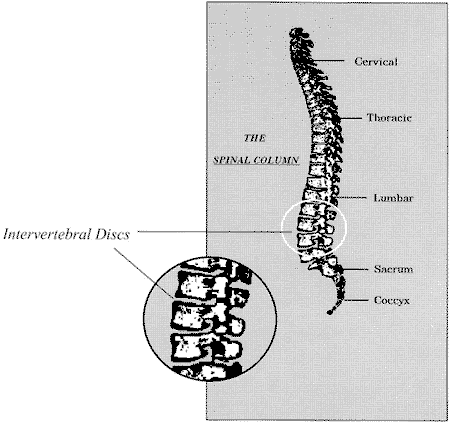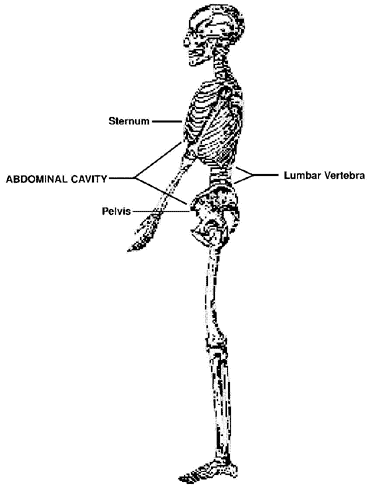When observing the front and rear sides of the midsection together (Chart A), we find that the lower spine has its own axis on top of the sacrum. The torso and upper body bend, twist and pivot from this median, which make the midsection muscles solely responsible for these actions. This region is often referred to as the "small of the back". It is a bulls-eye for ailments caused by spinal misalignment.
Chart A
Chart B

A Common Affliction
Back pain caused by excessive stress on the spine is one of the most common afflictions of modern life. Almost everyone has experienced short, acute periods of back pain, which can vary from minor discomfort to excruciating agony. Chronic back pain that lasts for weeks, months, or years can destroy the quality of a person's life and ruin his or her career.
Back ailments are common among competitive athletes who have strong, well-conditioned bodies, because they put their bodies under enormous stress that often causes breakdowns that do not always heal or that cannot be repaired. Basketball player Larry Bird is one example of an athlete whose career was cut short by chronic pain resulting from the constant pounding of competition at the highest level.
Non-athletes don't put their bodies under nearly the kind of stress that competitive athletes do, but they aren't in the kind of physical condition that athletes are in. The result is that even mild-to-moderate physical activity can throw a non-athlete's back out of alignment. The 50-year-old who only plays tennis on an occassional weekend can easily injure his back simply by trying to hit a difficult backhand. And anyone can easily put their spine out of alignment by trying to lift a heavy object improperly.
Strengthening Your Lower Back Muscles
What then can fitness and longevity enthusiasts and competitive athletes do to prevent lower back ailments? There are two keys to preventing debilitating back pain. The first key is to strengthen the muscles that surround the spine, especially your abdominals, obliques, and lumbar erector muscles in your lower back.
Sometimes even the best conditioned athletes ignore the muscles in their midsection by concentrating strictly on leg and upper-body strength, and building up their heart muscles through aerobic exercise. As for non-athletes, it is rare for them to have the kind of strength they need in the muscles surrounding their spines.
Waist-Strengthening Exercises
Recognizing that lower-back injuries lead to shortened athletic careers and a great deal of suffering for athletes and non-athletes alike, I've put together a unique program to provide functional support for the torso and spine in order to prevent injury to these areas.
Prior to commencing my waist strengthening regimen, you need a complete assessment of the muscles you wish to develop. Instead of only training the waist from the front (as so many are preaching today), you should also direct your attention to your sides and lower back.
Exercises that isolate the upper and lower abs, the obliques (sides) and the lower back are all conducive to an impressive looking waist as well protection against back injuries. Since the obliques have two main functions--to bend and twist the torso--it's important to perform exercises that incorporate these angles of contraction.